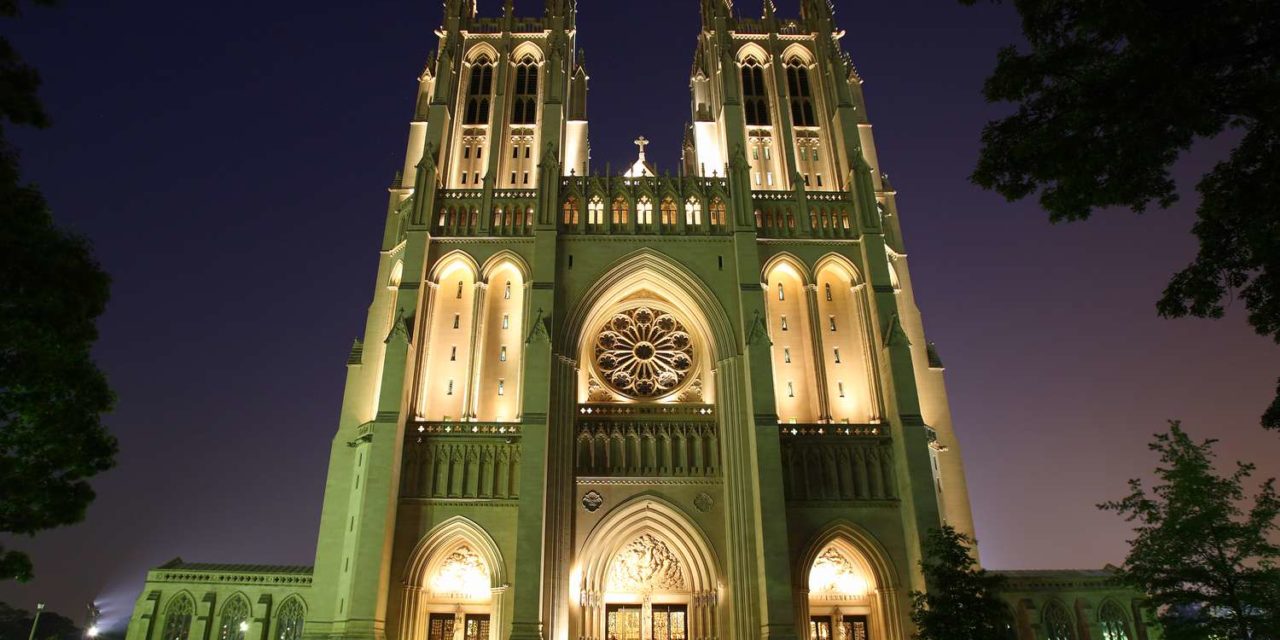Dating back to between 1610 and 1626, the San Miguel Chapel in Santa Fe, N.M., is considered the oldest church structure in North America. The Spanish colonial mission church is constructed of mudbricks, common building materials in the southwestern part of the country.
Houses of worship have long played a central role in American life, not only spiritually but also geographically. Whole towns have been built around churches, and their steeples have historically served as both physical landmarks and symbols of a town and country’s priorities.
As Christians, we can worship the Lord anywhere, of course, and are actually commanded to worship Him everywhere in spirit and truth (John 4:24). Over the years, I’ve had pastors who regularly remind the congregation that the “Church” is not a building – but a people on the move, out and about spreading the Good News of Jesus Christ.
But physical buildings and related sites can provide a practical and inspirational lift to our worship experience. They also say something about us.
It was Winston Churchill who famously quipped, “We shape our buildings; thereafter they shape us.”
Admittedly, I’ve been a bit disheartened at recent church construction projects. Many seem to lack creativity, more closely resembling banks and libraries than soaring and dramatic houses of worship befitting our mighty and miraculous God. I understand the cost and budgetary restrictions, especially for churches of a certain size. But could it be that bland architecture is helping to contribute to a culture where too many churches are similarly conforming to the ways of the world? Instead of lifting our eyes to Him, are we trying to lower Him to us?
Where are the most beautiful places of worship in the United States today? If by “beautiful” we mean where we connect with one another to praise the Lord and serve our local communities, our home churches must be at the top of the list.
But aesthetically speaking, where are the most beautiful and magnificent structures across the country? Sadly, some of these churches are now under the auspices of denominations that have lost their way. Nevertheless, their architecture rightly reflects the might and majesty of Jesus Christ.
This list is hardly exhaustive, but it’s a start:
- The National Cathedral (Washington, D.C.)
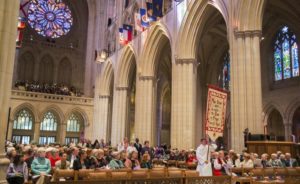
The world’s 6th largest cathedral, it was built over 83 years. Though he never lived to see it, of course, President George Washington, along with Major Pierre L’Enfant, had called for a “great church for national purposes.”
- Trinity Church (New York City)
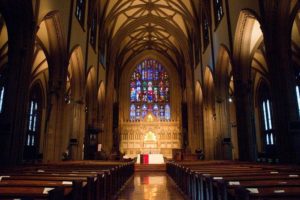
While the parish dates back to 1696, the current neo-Gothic building was dedicated on Ascension Day in 1846. Movie fans will remember it being featured in “National Treasure.”
- Moody Church (Chicago)
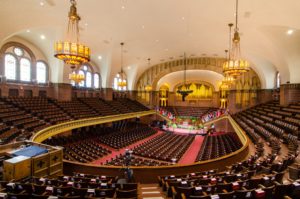
Dedicated in 1925, the sanctuary was reportedly modeled after the Hagia Sofia, a one-time cathedral in Istanbul. It’s pastor back then, P.W. Philpott, declared:
“We ask the question, ‘What mean these stones?’ They mean that there is a great Protestant church in the city of Chicago where rich and poor alike are ever welcome and where in spirit and in truth they can worship the God who is the maker of us all. They mean also that this church is to be a base from which heralds of the cross will be sent forth in great numbers to the ends of the earth to tell the story of redeeming grace.
- Duke University Chapel (Durham)
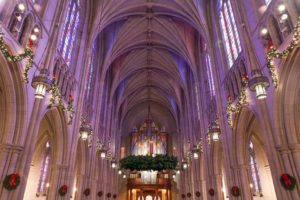
First used for the school’s commencement in 1932, the school’s founder, James Buchanan Duke, deliberately placed the chapel in the center of the campus.
“I want the central building to be a great towering church which will dominate all of the surrounding buildings, because such an edifice would be bound to have a profound influence on the spiritual life of the young men and women who come here,” he said when selecting the location.
- Saint Patrick’s Cathedral (New York City)
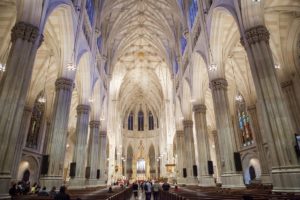
Derided and named “Hughes’ Folly” after the New York Archbishop John Hughes who decided to build the structure on the outskirts of the city, 103 well-heeled city residents pledged $1000 each for the project. Construction began during the Civil War and was completed in 1879.
During a recent renovation project, church officials hoped to dig down below and add meeting space beneath the structure – only to realize the cathedral was built on solid rock. New York’s Archbishop Timothy Cardinal Dolan likened that finding to the fact that those who claim Christ as Savior are perched securely and safely on solid ground.
- Memorial Presbyterian Church (Saint Augustine, Fla.)
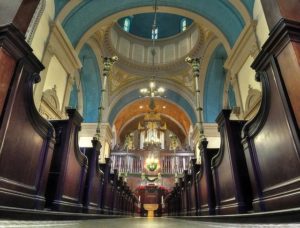
Once deemed one of the top eight religious wonders in the United States, the building was funded by industrialist and the founder of Standard Oil, Henry Morrison Flagler. It was donated in honor of his daughter, Jennie Louise Benedict, who died during childbirth.
A 900-pound cross sits atop the church.
The Swiss architect Mario Botta has observed that “Church architecture describes visually the idea of the sacred, which is a fundamental need of man.”
What houses of worship would you add to the list?

